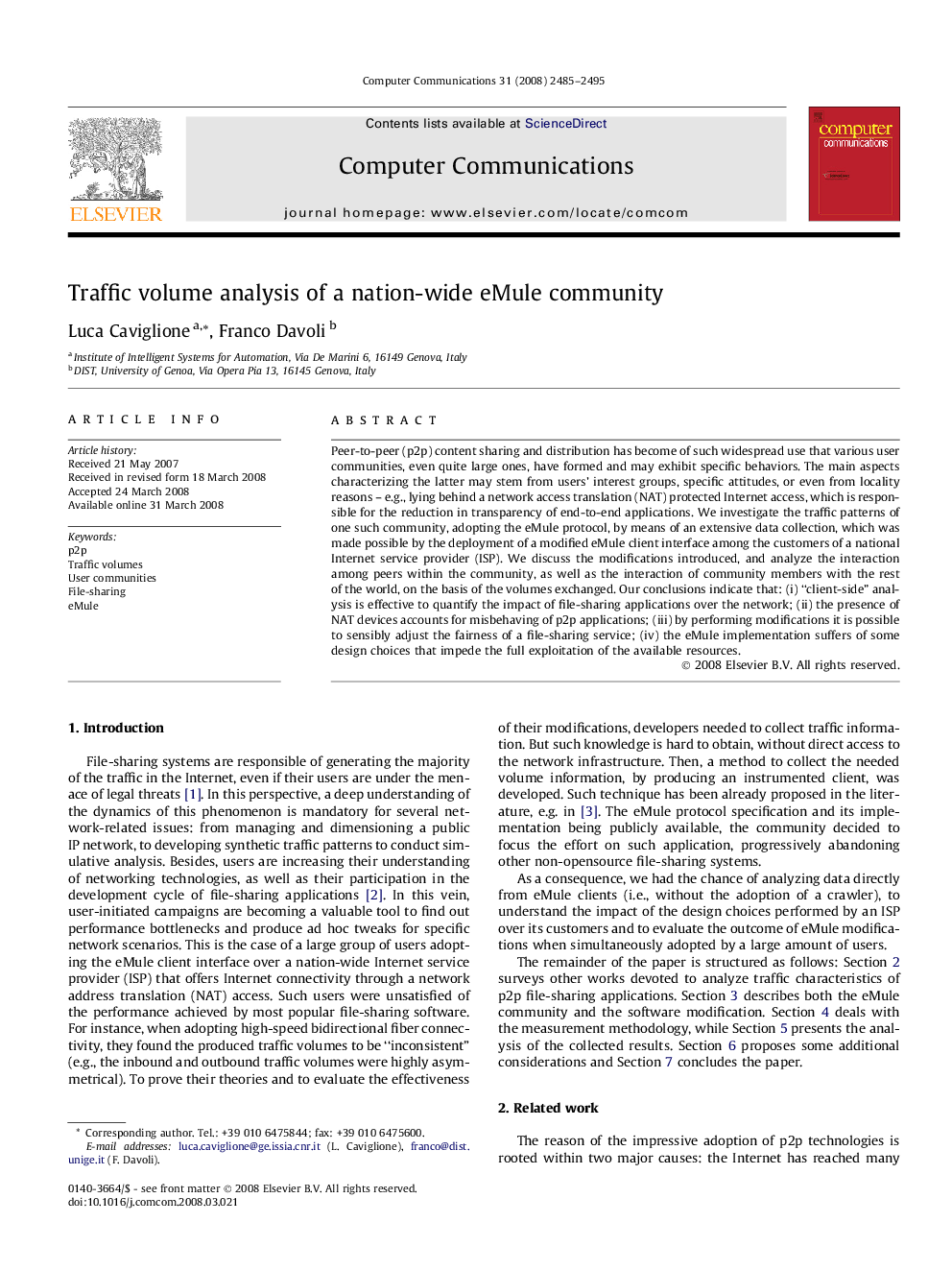| Article ID | Journal | Published Year | Pages | File Type |
|---|---|---|---|---|
| 450418 | Computer Communications | 2008 | 11 Pages |
Peer-to-peer (p2p) content sharing and distribution has become of such widespread use that various user communities, even quite large ones, have formed and may exhibit specific behaviors. The main aspects characterizing the latter may stem from users’ interest groups, specific attitudes, or even from locality reasons – e.g., lying behind a network access translation (NAT) protected Internet access, which is responsible for the reduction in transparency of end-to-end applications. We investigate the traffic patterns of one such community, adopting the eMule protocol, by means of an extensive data collection, which was made possible by the deployment of a modified eMule client interface among the customers of a national Internet service provider (ISP). We discuss the modifications introduced, and analyze the interaction among peers within the community, as well as the interaction of community members with the rest of the world, on the basis of the volumes exchanged. Our conclusions indicate that: (i) “client-side” analysis is effective to quantify the impact of file-sharing applications over the network; (ii) the presence of NAT devices accounts for misbehaving of p2p applications; (iii) by performing modifications it is possible to sensibly adjust the fairness of a file-sharing service; (iv) the eMule implementation suffers of some design choices that impede the full exploitation of the available resources.
